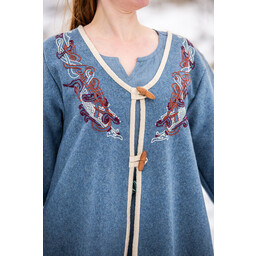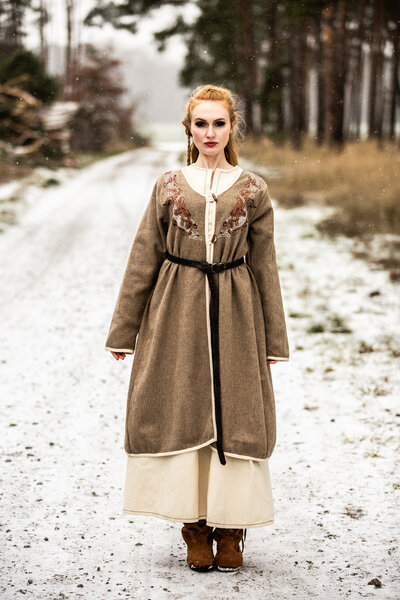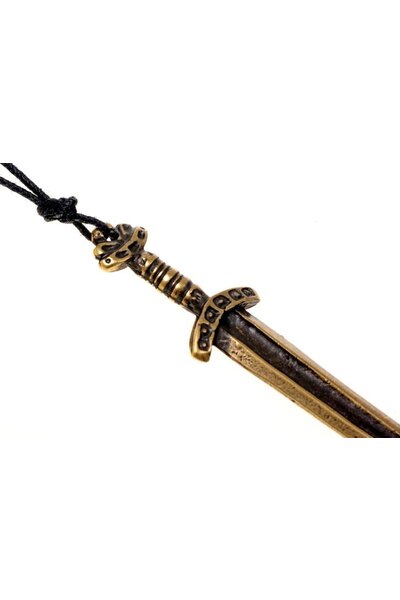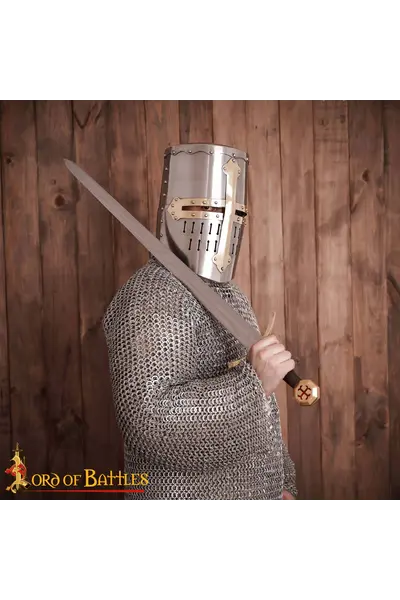Product description
The Birka coat originates from the Viking era and is named after the historical settlement of Birka in Sweden. Birka was an important trading place, and the garments found there show a high quality in textile production. The Vikings were known for their skills in textile processing and embroidery, often using natural materials such as wool and linen. Their clothing was functional but also decorative, indicating the high status of the wearer in society. Discover the Viking Birka Coat Skadi, an excellent replica of a historical garment from the Viking era. Crafted from a high-quality wool blend, this coat offers both warmth and authentic historical elegance. The front wooden buttons add a rustic and traditional touch to the coat. The plain cotton border that adorns the coat highlights its simplicity. A special highlight is the elaborate hand embroidery in the original Urnes style, located at the neck area. This style, named after the Urnes Stave Church in Norway, was popular in the late Viking era (11th century). This embroidery gives the coat a distinctive identity and showcases the impressive craftsmanship of the Viking era. The Viking Birka Coat Skadi is ideal not only for historical reenactments and LARP events but also for anyone looking for a unique garment with historical flair.
Details:
Material: 70.69% Wool, 7.39% Polyester, 7.28% Nylon, 14.64% Viscose
Color: blue
Size: S to XXXL
Washing instructions: dry-cleaning only
Based on a historical original
Shipment weight (g): 2000 *
This item is produced in limited quantities only. This means that every piece is unique. Sizes & finish may vary lightly from piece to piece.
When packaging this item, we exclusively use 100% recycled plastic and recycled paper/cardboard from FSC certified forests. We reuse a large part of the material directly without the intervention of a recycling process.
Recycle the material by separating your waste:
1. Cardboard: separate or reuse your paper.
2. Plastic cushions, clothing bags and plastic tape: separate or reuse your plastic. If possible, pierce the cushions with a volume reduction needle.
3. Paper packaging for jewelry and small items: these have a plastic inner layer. Remove these, then separate your paper and plastic.
Read here about how we are committed to sustainability.



























